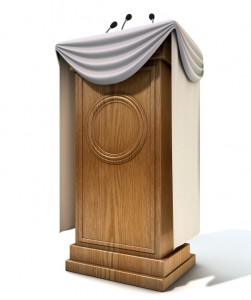
Seminars and roadshows are common physical events in the B2B world. Like anything else a company does, events are worth only as much as their return, which is largely dependent on how many quality leads are attending. Implement these five simple strategies to drive attendance to your next in-person event.
1. Establish a timeline.
Marketing for most events can start anywhere from 12 weeks to just 3 weeks prior to the event and should carry through to post-event follow-up activities. When timing the invitations, keep in mind that the shorter the event’s duration, the shorter the event announcement lead time can and should be. For a weekend-long trade show, three months in advance is a good lead time. For a two-hour seminar, however, chances are your contacts only need three to four weeks to plan. By extending that timeframe, you risk a potential attendee unwilling to commit too far in advance, losing enthusiasm, or simply forgetting about the event altogether.
Whatever the time frame you choose for communicating and promoting, establishing a reasonable timeline is essential to planning a successful B2B event. It sets the conversation at a good cadence, allows time for feedback, and keeps your invitees’ inboxes from overloading with email blast reminders two to three days prior.
2. Talk to the right people.
Anyone who has coordinated a large event knows that audience quality is just as important as audience quantity. No one wants to waste their team’s resources on an event that doesn’t produce loyal customers, and that outcome requires a high degree of intentionality. A lot of questions should be asked and thoroughly answered before crafting a single invitation. Questions such as: who is your ideal client—what are they like? With that in mind—who is the ideal attendee at this event? Is this event intended to expand your current customer base or extend into another industry? Once you have your ideal attendee well-profiled, keep asking and answering questions: What does this person want out of an event? What is most important to them?
In a white paper titled “Driving Attendance,” published by EXPO Magazine, presidents, vice presidents, middle managers and lower managers name the top factors influencing their decision to attend a B2B event. According to the survey, presidents place high importance on the specific exhibitors at an event, as well as on gathering information in preparation for an upcoming purchase. Meanwhile, vice presidents, middle managers and lower managers are most influenced by the possibility of finding specific information relating to decisions he/she is facing, as well as current technology updates. Know who you’re targeting and what they’re looking for, and craft your messages accordingly.
3. Use the right tools.
According to 156 leading event coordinators in another survey published by EXPO Magazine, the mediums most commonly used for attendance marketing are email, Facebook and direct mail postcards. The survey reports that email and e-newsletters have the largest ROI by far (25 percent), followed by a combination of direct mail with email (18 percent) and direct mail on its own (12 percent). Perhaps surprisingly, social media is ranked markedly lower (3 percent).
You can leverage these tendencies by using emails and your e-newsletter to point invitees to an event landing page where they can register and learn more about the event.
(Note: If you don’t already have an email software that handles your e-newsletter, consider what the best tool might be for these emails. You will be sending a large group of leads multiple emails steadily for one to two months. If you want to look professional, sound professional, and cut through the noise of your audience’s already-crowded inbox, Outlook is not an option.)
4. Offer free product, not free registration.
This may sound like a slightly more complicated version of the same dollar-amount discount (“So I’m giving away a $10 webinar vs. a $10 registration fee, what’s the difference?”), but offering free product in exchange for an invitee’s registration pays off for a few reasons. First off— paid events have higher quantity and quality attendance than free ones. Free events are more likely to have a lot of no-shows and can attract otherwise uninterested grazers. Secondly, offering a free virtual product (e.g. a webinar or a free demo) ensures that you are attracting people potentially interested in your services. A lot of event registrations come with possibilities at winning free iPads or other technology, which is a great way to target no one—everyone wants a free iPad!
You can give away the free product when an attendee registers or at the end of the event.
5. Promote from within [your network].
What we mean is this: Have you had a seminar or conference similar to this one before? If so, get in touch with a past attendee(s) (ideally they are now your client), gather testimonials and share with your audience what value your now client got out of the past event. Others testifying to your event’s value in chorus will always sound better than you singing your own praises solo.
Also, do you have partners you can tap on the shoulder to help you get the word out? Have them post a link on their website, or retweet your link to register. You’ll reach many more people from a variety of lists.
Arm yourself with a thorough understanding of your target audience, employ these five best practices when planning your next B2B event, and you should be on track for a successful seminar, roadshow, tradeshow or conference.
There are no comments